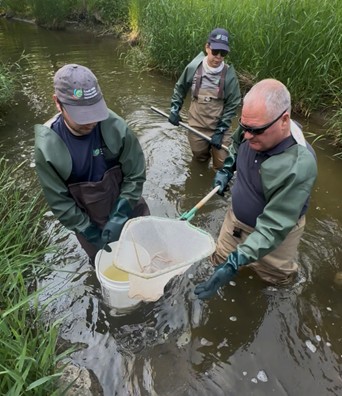I was recently appointed by Council to serve on the Credit Valley Conservation (CVC) Board of Directors. I am excited to serve on the CVC Board and join with them in the important work they do to protect our environmentally significant Credit River and its Watershed.
Many residents might be familiar with CVC from visiting their beautiful conservation areas, but might not be as familiar with the essential environmental protection and conservation work they do to safeguard our vital natural resources, and I would like to share more information with you about this work and its significance.
Credit Valley Conservation (CVC) was established by the Province in 1954 and is one of 36 Conservation Authorities. CVC is dedicated to protecting, restoring and managing the natural resources of the Credit River and its adjacent lands, known as the Credit River Watershed. The Credit River is almost 90 km long, and CVC is responsible for over 2,800 hectares (7,000 acres) of natural space in its Watershed, which extends from the Headwaters in Dufferin Country to Port Credit.
The beautiful Credit River flows through most of our community in Ward 11 as well, and connects with smaller watercourses, such as Levi’s Creek and Fletcher’s Creek. The Watershed is also highly biodiverse, containing more than 1,800 species of plants and animals.
Through their daily work, initiatives, programs, and strategies, CVC ensures our vital natural resources are protected and conserved for generations to come. CVC restores and enhances natural resources in these areas, through planting trees, meadows, native plant gardens, and cover crops, and restoring wetlands to ensure vital habitats for plants and animals are protected and species are preserved.
In addition to their environmental conservation and monitoring work, CVC reviews development proposals to ensure natural features are protected from land development and properties are located away from floodplain areas, to prevent flooding. CVC operates 59 real-time monitoring stations throughout the Watershed, allowing us to better understand, predict and warn about flooding, threats to water quality and low water levels. CVC also monitors and researches the changing conditions of natural systems in the Watershed to guide actions to reduce risks from the impacts of climate change, which continues to be a pressing issue in our City and country.
Climate change and land development can adversely impact these vital natural resources and the important benefits they provide naturally. The ability to clean our air or regulate our climate cannot yet be replaced by any technology, and building infrastructure such as stormwater ponds can be costly, so it is imperative to protect the natural resources of our Watershed through our collective efforts and actions.






